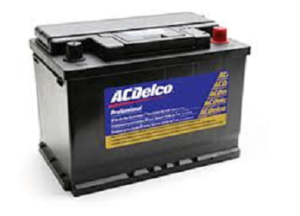Posted on 11/2/2021

When you hear a person speak of the non-repair zone of a tire, they are speaking of a part of the tire that has been punctured. Most often it is likely by a screw or nail. I can’t emphasize enough the importance of having all tire repairs be completed by a trained mechanic to do a complete and proper repair. Having good tires is so important for your safety. You want to make sure any tire repair is done correctly. The picture below shows you the repair area (grey) and the non-repair zone (red) on a tire. If a puncture occurs in the repair zone then your technician will do an inspection of the interior of the tire. Afterwards the mechanic will decide if a repair can be completed. He/ she will look at the size and spacing of the damages to determine if the tire can be fixed or will need to be scrapped. For more information on tire repair and our Tire Warranty, click on the link below. Then click on Tires and Tire Inspection and then Tire Warranty
Posted on 10/27/2021

Good question! You already know that your exhaust system is composed of more that one part (for example the exhaust). That’s why they call it an exhaust system! There is also more than one function of the exhaust system (like: keep your car quiet). COMPONENTS OF AN EXHAUST SYSTEM The basic components of an exhaust system are: O2 sensors, catalytic converter(s), exhaust pipe, muffler and tail pipe. The basic functions of the exhaust system are: to safely get the hot exhaust from the engine out the tail pipe, remove harmful pollutants and muffle the engine noise to acceptable levels. We all have heard a loud exhaust… quite harmful to the ears! HOW THE EXHAUST SYSTEM WORKS First, the catalytic converter “scrubs” the harmful pollutants and particles from the exhaust gas that is created when the engine is running. Next, the exhaust gas runs through the exhaust pipe, then the muffler and out the tail pipe. You will notice that the exhaust pipe is curved. This is so that t ... read more
Posted on 10/12/2021

How much do you know about car batteries? Very little? … me too! Our NAPA buddies have given us some basic information about car batteries to get us up to speed. When looking to replace a battery, you want to consider two things: 1) the cold cranking amps (CCA) and 2) the reserve capacity. Cold Cranking Amps CCA are generally listed on the battery and are like the power output used to start a cold vehicle engine. Being in Wisconsin, you need a battery with more cold cranking amps than you do where the weather is milder. In colder weather, it takes more power to turn your vehicle’s engine over to get it started. The engine has to deal with your car’s cold, sluggish oil. Also, the chemical reaction, that creates electrical energy, is less efficient in the cold weather. You should get a battery that has at least or more cold cranking amps than the manufacturer recommends. Reserve Capacity Reserve capacity, is the number of minutes, of reserve power, the battery has at any ... read more
Posted on 9/23/2021

I absolutely LOVE Fall! The weather is great and the tree colors are vibrant and beautiful. The Fall season also means less daylight hours. The Car Care Council would like us to be aware that with less daylight means we will be using our vehicle’s lights more. We know this of course, but may not think of it in regards to safety. If you haven’t already, check all your lights to make sure they are working correctly. This includes headlights, tail lights, brake lights (all three), turn signals, fog lights, and your interior dome lights. Pay particular attention to your headlights and tail lights. It is crucial for your safety and the safety of others that these lights work, are aimed correctly and the covers are clean for best visibility. If your car sits outside a lot, the headlights will start to look fogged over. At any local parts store, you will find a special cleaner that is available to clean them so they shine like new! Not to mention being safe and visible
Posted on 9/15/2021

For many of us, driving without power steering sounds impossible! Having to crank those great big steering wheels… oh my! How did people do it? Well, it was quite a work out that’s for sure! Maintaining Your Power Steering Let’s take a look at how to maintain your vehicle’s power steering, so you don’t have to go without this luxury. Vehicles today have a hydraulic pump, electric pump or an electric motor to help you steer. This pump is powered by your vehicle’s serpentine belt. Just like other parts of our vehicles, pumps and motors will eventually wear out and the hoses will start to leak. It pays to be proactive and have this service completed on your vehicle. Check with your vehicle’s manual and get the advice from your service adviser as to the best schedule for this service. Power Steering Service This service will include replacing the power steering fluid, and lubing the mechanical parts as needed. During a routine oil change, our technicians will also lube any parts as ne ... read more